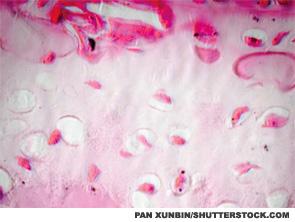The detection of anticentromere and anti–Scl-70 antibodies is very useful for the diagnosis of scleroderma.
The detection of antibodies to Ro/SSA and La/SSB are also useful for the diagnosis of Sjögren’s syndrome.
The only one of these tests that is useful to monitor activity is the anti-dsDNA.
Other antinuclear and related autoantibodies have been described in patients with inflammatory myositis and systemic sclerosis (summarized in Table 3 and Table 4).

Rheumatoid Factors
Rheumatoid factors (RFs) are antibodies directed against the Fc portion of immunoglobulin G (IgG). RFs, as currently measured in clinical practice, are usually an IgM RF, although other immunoglobulin types, including IgG and IgA, have been described.32,33 ELISA or nephelometry generally detects the presence of RF; latex agglutination (a test fraught with technical problems) is still sometimes used. Testing for RF is primarily used for the diagnosis of RA; however, RF may also be present in other rheumatic diseases and chronic infections (see Table 5).34
Patients may have detectable serum RF in a variety of rheumatic disorders, many of which share similar features, such as symmetric polyarthritis and constitutional symptoms. These include idiopathic juvenile idiopathic arthritis, palindromic rheumatism and Sjögren’s syndrome (see Table 5).32,33
Nonrheumatic disorders characterized by chronic antigenic stimulation (especially with circulating immune complexes or polyclonal B lymphocyte activation) commonly induce RF production (see Table 5). Included in this group are indolent or chronic infection, as with subacute bacterial endocarditis or hepatitis B or C virus infection, and inflammatory or fibrosing pulmonary disorders, such as sarcoidosis, malignancy and primary biliary cirrhosis. Rheumatoid factors have been found in up to 5% of young, healthy individuals. The reported incidence may be higher in elderly subjects without rheumatic disease, ranging from 3–25%.
The higher the titer, the greater the likelihood that the patient has a rheumatic disease. There are, however, frequent exceptions to this rule, particularly among patients with one of the chronic inflammatory disorders noted above. Further, the use of a higher titer for diagnosis decreases the sensitivity of the test at the same time as it increases the specificity. RF-positive patients with RA may experience more aggressive and erosive joint disease and extra-articular manifestations than those who are RF negative. Similar findings have been observed in juvenile RA. These general observations, however, are of limited utility in an individual patient because of wide interpatient variability. In this setting, accurate prediction of the disease course is not possible from the RF alone. RF titer rarely correlates with the degree of clinical activity.
